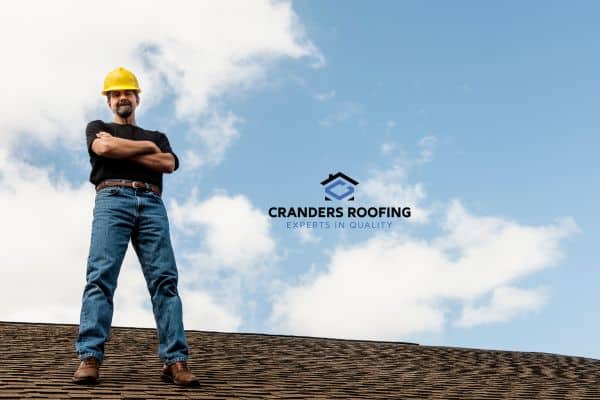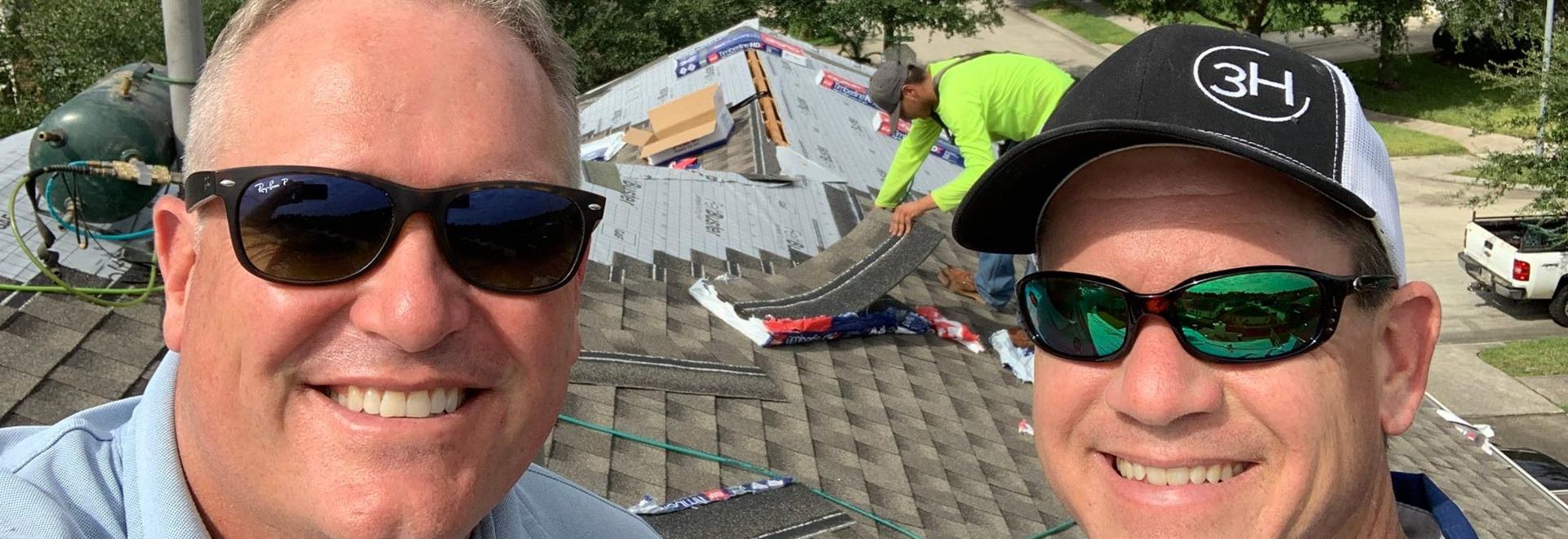
Post-Hurricane Roof Care In The Kingwood TX Area

Interview with Cranders Roofing on Post-Hurricane Roof Care
What are the first steps a homeowner should take to assess their roof's condition immediately after a hurricane?
As a homeowner, your first step after a hurricane should be to ensure your safety. Once it's safe to go outside, visually inspect your roof from the ground. Look for signs of damage, such as missing shingles, debris, or visible structural damage. Avoid climbing on the roof yourself, as it could be unstable. Instead, take notes and photographs of what you can see from the ground and contact a professional roofing company like Cranders Roofing for a thorough inspection.
Can you describe the most common types of roof damage you typically see after a hurricane in the Kingwood area?
In the Kingwood area, we often see several types of roof damage following a hurricane. These include missing or torn shingles, damaged flashing, and debris impacts. High winds can cause shingles to lift and detach, while heavy rain and flying debris can lead to punctures and leaks. Additionally, water infiltration can damage the underlying structure and lead to mold growth if not addressed promptly.
How can homeowners safely document roof damage for insurance purposes without putting themselves at risk?
To document roof damage safely, homeowners should use a high-quality camera or smartphone to take clear photos from the ground. Capture images of any visible damage, such as missing shingles, fallen branches, or debris on the roof. Also, take pictures of interior damage, like water stains on ceilings or walls. If you have a drone, it can be a helpful tool for safely obtaining aerial photos. Always prioritize safety and let professionals handle any close-up inspections.
What temporary measures can property owners take to prevent further damage if they discover their roof has been compromised?
If your roof has been compromised, you can take temporary measures to prevent further damage. Cover any exposed areas with a tarp or plastic sheeting to keep water out. Secure the tarp with nails or heavy-duty tape, ensuring it is tightly fastened to prevent it from blowing away. Acting quickly but safely and avoiding attempting repairs during inclement weather is essential.
How soon after a hurricane should a professional roof inspection be conducted, and what does this inspection typically involve?
A professional roof inspection should be conducted as soon after a hurricane as possible to assess the extent of the damage. During the inspection, we look for visible damage, such as missing shingles, broken tiles, and punctures. We also check for less obvious issues like water infiltration, damaged flashing, and weakened structural elements. This comprehensive inspection helps us develop an accurate repair plan and provide a detailed report for your insurance claim.
What are some signs of hidden roof damage that homeowners might overlook but professionals like you can identify?
Homeowners might overlook signs of hidden roof damage, such as subtle water stains on ceilings or walls, mold growth, and damp insulation in the attic. Professionals like us can identify these issues using specialized tools and techniques. We also check for signs of structural damage, such as sagging or warping of the roof deck, which may not be immediately visible but can indicate significant underlying problems.
How do you prioritize roof repairs after a widespread disaster like a hurricane?
In the aftermath of a widespread disaster, we prioritize roof repairs based on the damage's severity and the property's vulnerability. We first address the most critical issues, such as large leaks or structural damage that could pose safety risks. We aim to stabilize and protect each property quickly, then schedule more comprehensive repairs as needed. We also work closely with insurance companies to expedite the claims process and ensure timely maintenance.
Can you walk us through the process of working with insurance companies for roof repairs or replacement after a hurricane?
Working with insurance companies for roof repairs or replacement involves several steps. First, we conduct a thorough inspection and document all damage. We then provide a detailed report and estimate to the homeowner, who submits the claim to their insurance company. We often meet with insurance adjusters to ensure they have accurate information about the damage. Once the claim is approved, we schedule the repairs or replacement, keeping the homeowner informed throughout the process.
What upgrades or improvements would you recommend to make a roof more resilient against future hurricanes?
We recommend several upgrades to make a roof more resilient against future hurricanes. These include installing impact-resistant shingles, upgrading to metal roofing, and ensuring proper attic ventilation to reduce wind uplift. Reinforcing roof decking and upgrading fasteners can also enhance stability. Additionally, we suggest regular maintenance and inspections to keep the roof in optimal condition.
Considering the likely high demand for services, how long does it typically take to repair or replace a roof after hurricane damage?
The time it takes to repair or replace a roof after hurricane damage varies depending on the extent of the damage and the demand for services. Minor repairs can often be completed within a few days, while more extensive repairs or complete replacements may take several weeks. We strive to provide prompt and efficient service, even during high-demand periods, by prioritizing urgent repairs and working closely with our suppliers and crew.
Are there any specific maintenance steps homeowners should take in the months following a hurricane, even if their roof appears undamaged?
Even if your roof appears undamaged after a hurricane, performing regular maintenance in the following months is crucial. This includes inspecting the roof for any delayed damage, clearing debris from gutters and downspouts, and checking for signs of water infiltration. Scheduling a professional inspection can also help identify hidden issues and ensure your roof remains in good condition.
What advice would you give to homeowners about choosing a reputable roofing contractor in the chaotic period after a hurricane?
Choosing a reputable roofing contractor is essential in the chaotic period after a hurricane. Look for contractors with a solid local presence, positive reviews, and proper licensing and insurance. Ask for references and verify their credentials. Be wary of contractors who offer unusually low estimates or demand a full payment upfront. At Cranders Roofing, we pride ourselves on our reputation for quality work and reliable service in the Kingwood, Humble, And Huffman areas.
How has your approach to post-hurricane roof repairs evolved based on your experiences in Kingwood?
Our approach to post-hurricane roof repairs has evolved to prioritize efficiency, safety, and customer satisfaction. We've developed streamlined processes for damage assessment, documentation, and communication with insurance companies. Our team is trained to handle the unique challenges of hurricane damage, and we continuously update our methods and materials to provide the best possible service. Our experience in Kingwood has taught us the importance of quick response times and thorough inspections to ensure long-term roof integrity.
Can you explain how different roofing materials perform in hurricane conditions and which ones you recommend for our area?
Different roofing materials perform variably in hurricane conditions. Asphalt shingles, while common, can be prone to lifting and tearing. Metal roofing is highly durable and resistant to wind and impact damage. Tile roofs offer excellent resistance to wind but can be heavy and expensive. We recommend impact-resistant shingles or metal roofing for the Kingwood area due to their superior performance in severe weather conditions. Both options provide durability and longevity, which are essential for protecting your home during hurricanes.
What common mistakes do homeowners make when dealing with roof issues after a hurricane?
Homeowners' mistakes include delaying repairs, attempting DIY fixes, and choosing unqualified contractors. Delaying repairs can lead to further damage and higher costs. DIY fixes may not address underlying issues and can be unsafe. Choosing unqualified contractors often results in poor construction and unresolved problems. To avoid these mistakes, contact a reputable roofing professional like Cranders Roofing immediately after a hurricane to ensure your roof is adequately assessed and repaired.
